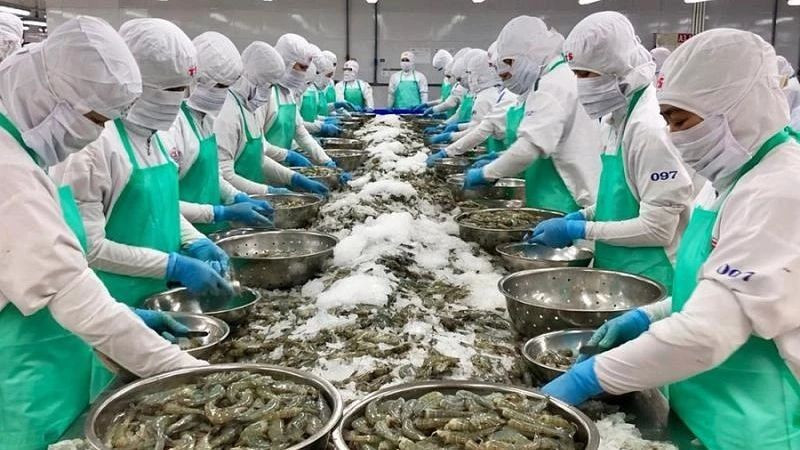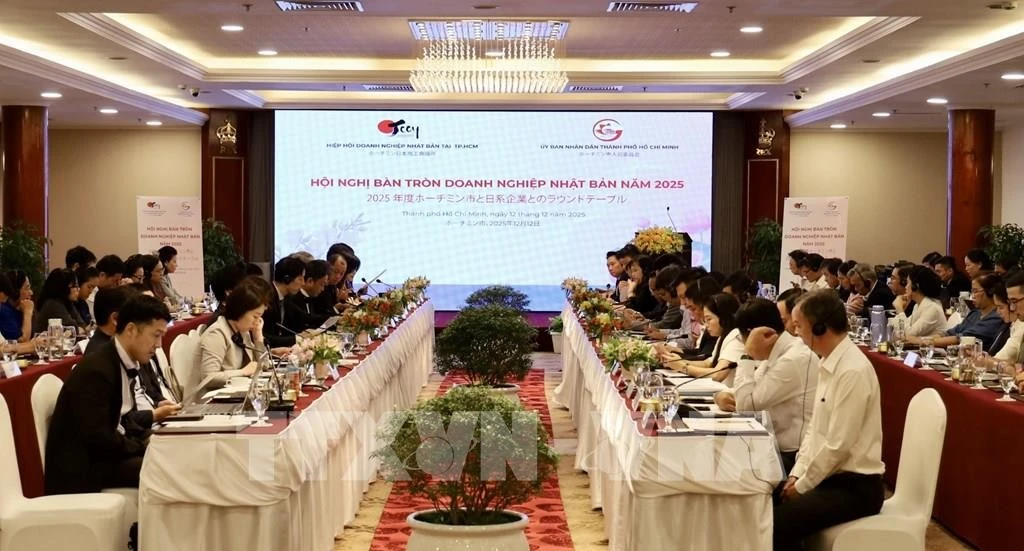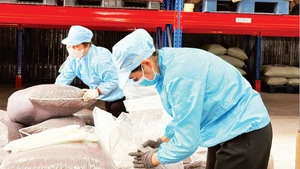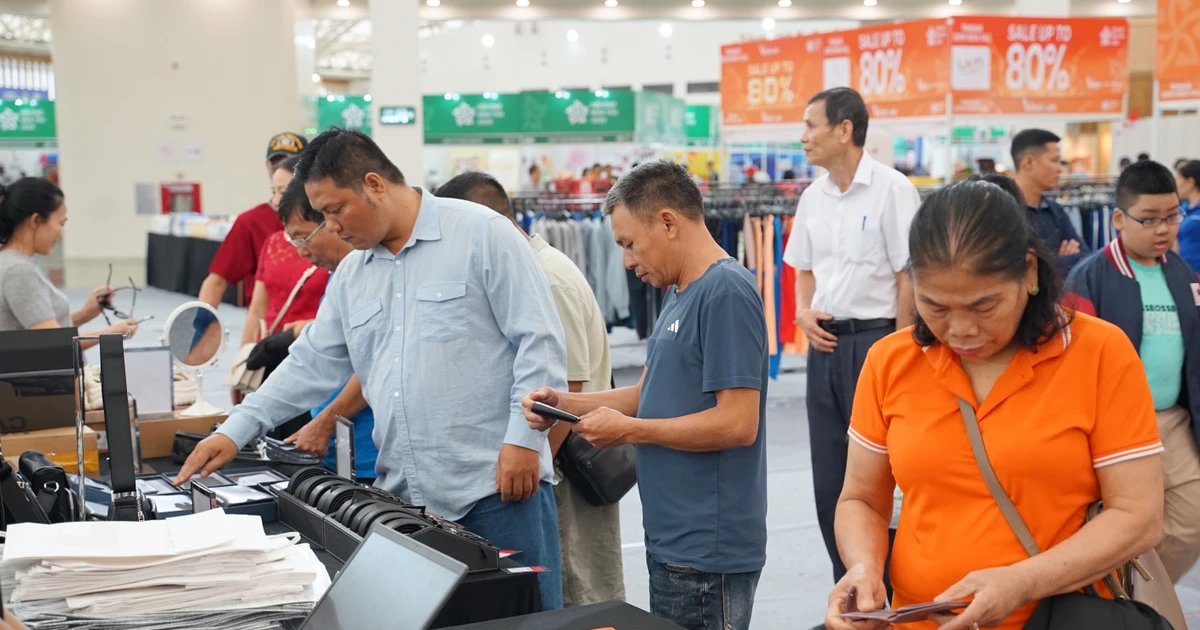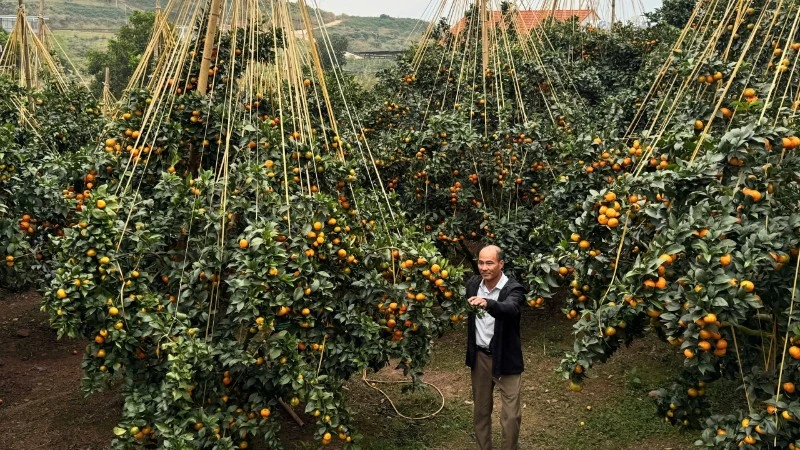Agricultural, forestry, and fisheries exports face numerous challenges
Under Resolution No. 25/NQ-CP dated February 5, 2025, issued by the Government on growth targets for sectors, industries, and localities to ensure national GDP growth of 8% or higher in 2025, the agriculture, forestry, and fisheries sector aims for an annual value-added growth rate of between 4–4.2%. Of this, agriculture is targeted at 3.85%, forestry at 5.47%, and fisheries at 4.35%. In the first quarter of 2025, the sector achieved a growth rate of 3.7%.
Indeed, in the first quarter of 2025, the GDP of the agriculture, forestry, and fisheries sector rose by 3.74%, contributing 6.09% to the national economy’s added value — the highest first-quarter growth rate in the past four years. Total export turnover of agricultural, forestry, and fishery products reached 15.72 billion USD, up 13.1% compared to the same period in 2024.
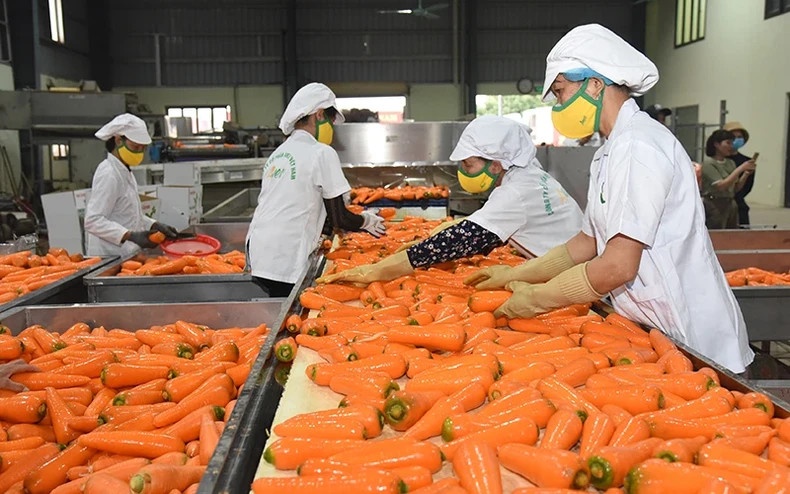 |
| In the first quarter of 2025, the gross domestic product (GDP) of the agriculture, forestry, and fisheries sector grew by 3.74%, contributing 6.09% to the overall increase in the national economy’s added value. |
According to the Institute of Policy and Strategy for Agriculture and Rural Development, the sector’s growth was supported by favourable weather conditions and the effective application of science and technology, which improved perennial crop yields. Livestock farming also developed well, with disease outbreaks under control. Forestry production accelerated afforestation efforts, leading to a higher volume of harvested timber. Aquaculture output increased thanks to intensive farming practices and the greater application of high technologies.
However, agricultural, forestry, and fisheries exports is facing numerous challenges. Some commodities have seen declining export value: rice exports fell by 19.7% due to a 20.1% drop in average export prices; fruit and vegetable exports decreased by 11.3%, mainly due to a 38.9% decline in shipments to China. Meanwhile, input material costs have risen, with the price index for materials, fuels, and supplies used in production up 4.93% year-on-year, driving up production costs.
Three strategic scenarios to maintain and boost agricultural development
An immediate concern is the United States’ plan to impose a 46% reciprocal tariff on imports from Vietnam, although its enforcement has been postponed. The Institute of Policy and Strategy for Agriculture and Rural Development under the Ministry of Agriculture and Rural Development has forecast several scenarios and proposed solutions to respond to US tariff policies.
Firstly, if the tariff remains at 10% throughout 2025 and is uniformly applied to all countries, the impact on Vietnam’s agricultural exports and annual growth target would be minimal.
Secondly, if, following the postponement, the two countries agree on a 20% tariff, experts predict that export turnover in the second half of 2025 would decline by around 20%. In this case, the sector’s annual growth rate could fall by between 0.15 and 2 percentage points, leaving growth at around 3.8–3.85%.
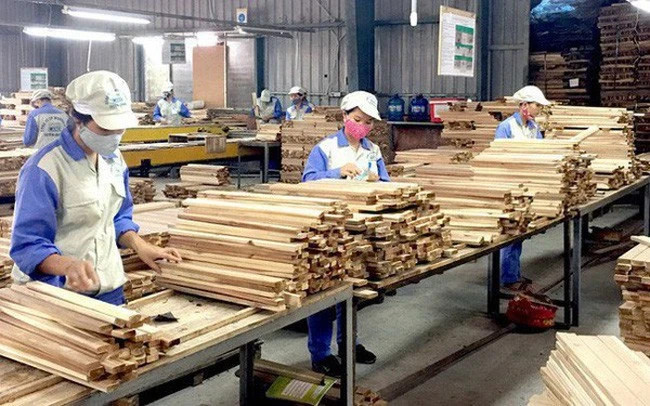 |
| The agricultural sector has prepared three scenarios to respond to US tariff policies. |
Thirdly, if the United States ultimately imposes the full 46% tariff on Vietnamese imports after the deferral, export turnover in the second half of 2025 is expected to drop by 40%. This would potentially shave 0.3–0.4 percentage points off annual growth, bringing the sector’s growth rate down to 3.6–3.8%.
In response, the Institute recommends stepping up dialogue with the United States to seek reciprocal tariff reductions or to negotiate exemptions for key agricultural products. Transparency in product origin must also be assured.
Additionally, urgent support measures are needed for important commodities heavily affected by any new tariffs. These support measures, while temporary, must be timely and strong enough to enable businesses and farmers to adapt to the new circumstances.
Immediate support options include reducing import duties on input materials, deferring payment of value-added tax, corporate income tax, and personal income tax for agricultural producers and businesses, as well as offering preferential credit interest rates for those impacted.
At the same time, efforts must continue to boost productivity, enhance quality, and lower production costs, primarily through scientific research, technological innovation, and the application of high technologies. These measures aim to increase the competitiveness of Vietnamese agricultural, forestry, and fishery products in line with Resolution No. 57-NQ/TW dated December 22, 2024 by the Politburo, which calls for a breakthrough in developing science, technology, innovation, and digital transformation nationally. Products must also meet the standards and regulations required by the US market.
Other necessary solutions include market diversification. Besides maintaining traditional markets such as China, East Asia, ASEAN, the United States, and the European Union, Vietnam must expand and deeply penetrate potential markets among BRICS nations (such as Brazil, Russia, and India), Latin American countries, major African economies, and explore emerging markets, including nations with strong demand for Halal food products.
